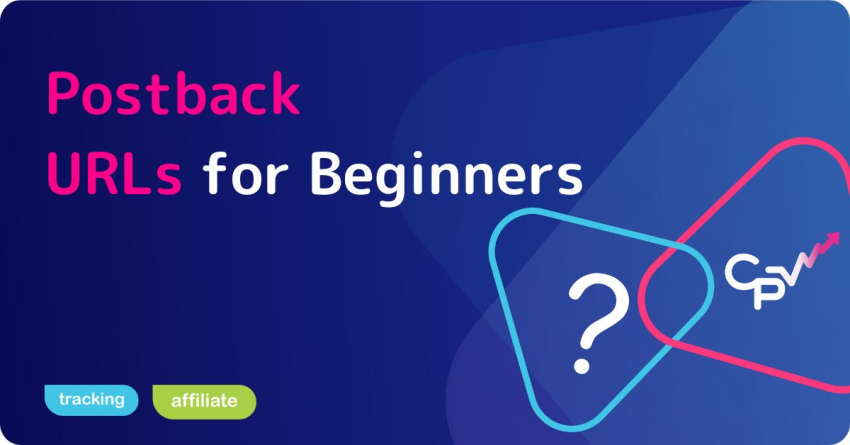In the world of affiliate marketing, there’s a tool called a postback URL that plays a key role in tracking conversions and actions.
This guide will help you understand what postback URLs are, how they work, and why they’re important.
What is a Postback URL?

A postback URL is a link called when a event is happening to inform another system about that event.
In other words, a Postback URL is a special type of link used to send conversion data from an advertiser or affiliate network back to a tracking system.
Imagine it as a way for servers to communicate directly without needing to rely on a user’s browser or cookies. In other words, it’s an automatic way for systems to confirm when a sale or sign-up happens.
Here are some important points to remember about postback URLs:
- They are triggered when a user completes an action, like making a purchase or signing up.
- They contain specific parameters to pass information, such as a unique click ID or conversion value.
- They help track conversions more accurately compared to pixel-based methods.
- They aren’t affected by ad blockers or deleted cookies, making them more reliable.
How Do Postback URLs Work?
The process is simple and efficient:
- A user clicks an affiliate link, which contains a unique click ID.
- The user completes a conversion (like making a purchase) on the advertiser’s website.
- The advertiser’s server calls the postback URL and includes the click ID and other conversion details.
- The tracking system receives this data and attributes the conversion to the right affiliate.
This seamless server-to-server communication ensures that affiliates get proper credit for conversions they drive, and advertisers can keep track of performance.
The following image provides a visual representation of how an S2S (server-to-server) postback URL works to track conversions:
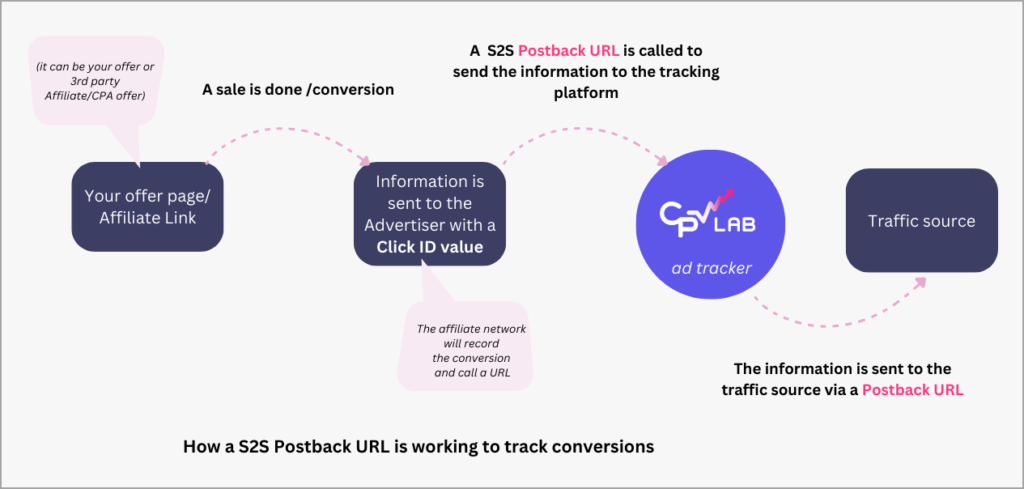
In the image:
- The process starts when a sale or conversion happens on the offer page or affiliate link.
- Information is sent to the advertiser, which includes a unique Click ID value.
- The advertiser then calls the S2S Postback URL to send the information to the tracking platform, such as CPV Lab.
- Finally, the information is sent to the traffic source via a postback URL, completing the tracking process.
Benefits of Using Postback URLs
There are several advantages to using postback URLs for tracking:
- Greater Accuracy: Postback tracking is more accurate than relying on pixel tracking, which depends on browser cookies.
- Resistant to Ad Blockers: Since postbacks work server-to-server, they aren’t impacted by ad blockers or users deleting their cookies.
- Real-Time Tracking: Postbacks allow for real-time tracking of conversions and other user actions, which can be crucial for campaign optimization.
- Cross-Platform Tracking: They provide the flexibility needed to track actions across different platforms, such as websites and apps.
Setting Up a Postback URL
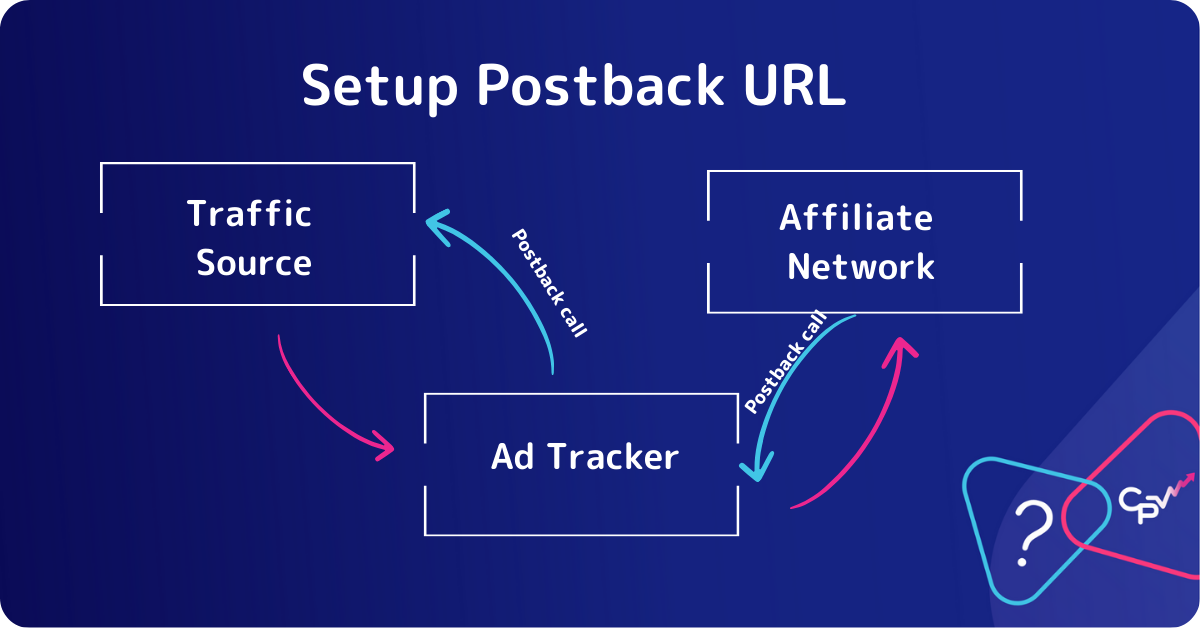
If you’re new to affiliate marketing, setting up postback tracking can seem a bit technical, but it’s manageable with the right steps. Here is a step-by-step guide to help you set up your postback URL:
If conversions are not being tracked, re-check the parameters and ensure the correct tokens are used.
Get a Postback URL Template
Start by getting a postback URL template from your tracking platform. It usually looks something like this: https://yourdomain.com/postback?subid=REPLACE&revenue=OPTIONAL
This URL is used to send data from the advertiser back to your tracking platform when a conversion occurs.
Identify Parameters Needed
- Identify the parameters needed by your affiliate network or advertiser.
- The most common one is
{click_id}or {subid} which helps match the conversion to the original visitor. - Other parameters like
{payout}or {revenue} can also be included to track the revenue generated from each conversion.
Add Affiliate Tokens
- Replace placeholder parameters like
REPLACEwith tokens provided by your affiliate network. - For example, you might end up with something like this:
https://yourdomain.com/postback?subid={click_id}&revenue={payout}
- Make sure to use the exact tokens provided by your affiliate network, as each network may have different naming conventions.
Submit the Configured Postback URL to Your Affiliate Network
- Submit this configured postback URL to your affiliate network.
- This is typically done in your account settings or within the settings of the specific offer you are promoting. Sometimes it can be found under Global Postback Settings.
- Check the network documentation to find out where to submit the URL.
Configure Your Tracking Platform
Make sure your tracking platform is set up to receive postback data.
- This usually involves configuring your tracking platform to recognize and process data coming from your affiliate network by using the right parameters.
- Log into your tracking platform, find the integration section, and set up your affiliate network.
- CPV One ad tracker can receive information about visitor id in the “subid” token and the payout or revenue in the “revenue” token.

Include Click ID in Your Campaign URLs
- For tracking to work, the tracking URLs you use must include a way to pass the click ID back to the affiliate network.
- This is typically done by adding a parameter like “
s2={!subid!}” to your offer URL. - Each affiliate network use different tokens (or macros) so it is important to have the correct parameter.
Example: https://advertiser. com/offer?s2={!subid!}
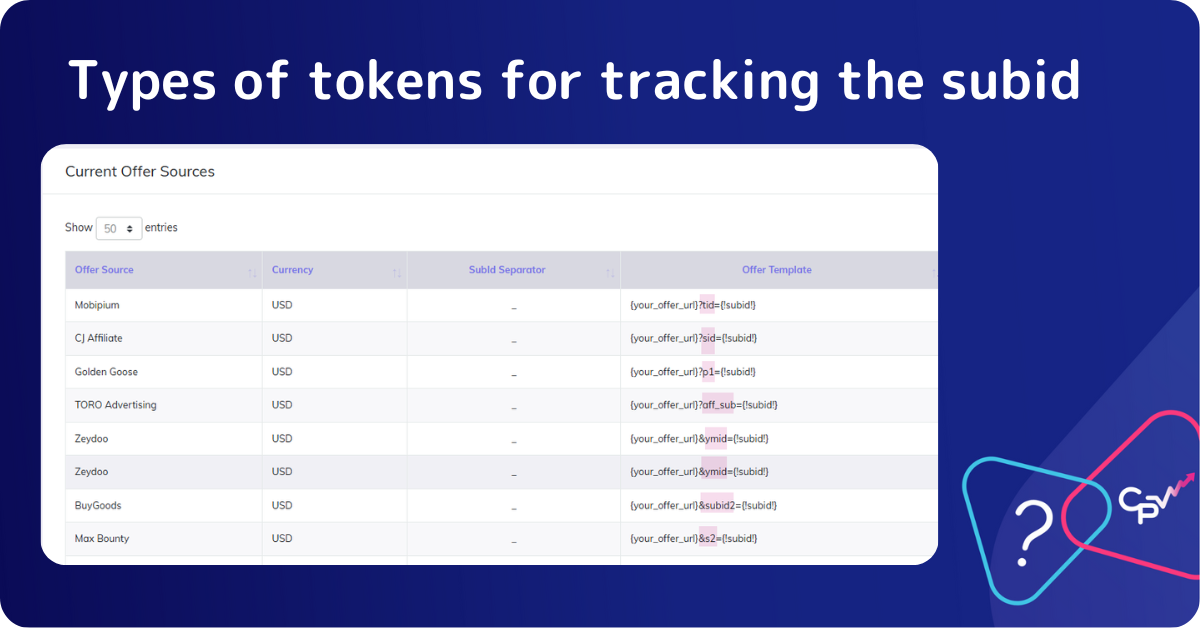
Test the Postback URL
- Testing is a crucial step.
- Perform a test conversion to see if the postback URL works as expected. Most affiliate networks and tracking platforms provide testing tools.
- Verify that the data is being received properly by checking the reporting section in your tracking platform.
Monitor and Troubleshoot
- After everything is set up, monitor the performance regularly.
- Look for discrepancies between the affiliate network and tracking platform data.
- In CPV One you have a Postback Log page under Settings menu where you can check all the Postback Calls.
Postback URL Setup Cheat Sheet (For Beginner Media Buyers)
| Step | What to Do | Example / Notes |
|---|---|---|
| 1. Get a Postback URL Template | Get the template from your tracking platform (each Offer source has it’s own postback URL) | https://yourdomain.com/postback?cid=REPLACE&payout=OPTIONAL |
| 2. Identify Required Parameters | Find out what tokens your affiliate network requires | Most common: {click_id}, and: {payout} |
| 3. Add Affiliate Tokens | Replace placeholders in the URL with the actual tokens from your affiliate network; The parameters should be the ones from the tracker and the macros from the affiliate network | Final example: https://yourdomain.com/postback?subid={click_id}&revenue={payout} |
| 4. Submit to Affiliate Network | Paste the complete postback URL into your network’s dashboard | Usually under Postback Settings or Account Settings |
| 5. Configure Tracking Platform | Ensure your tracker is set to receive and recognize postback data | Add your affiliate network inside your tracker under integrations |
| 6. Include Click ID in Offer URL | Pass the click ID to the offer URL so it can be returned in the postback | Example: https://advertiser. com/offer?s2={clickid} |
| 7. Test the Setup | Use the network’s test tools or do a test conversion to check functionality | Confirm data appears in the reports of your tracking platform |
| 8. Monitor & Troubleshoot | Regularly review reports to ensure accurate tracking; compare data with your affiliate network | Look out for zero conversions or mismatched click nu |
How to Set Up a Postback URL in CPV One and CPV Lab
To set up a Postback URL in CPV One, follow these steps:
Log in to Your Tracking Platform
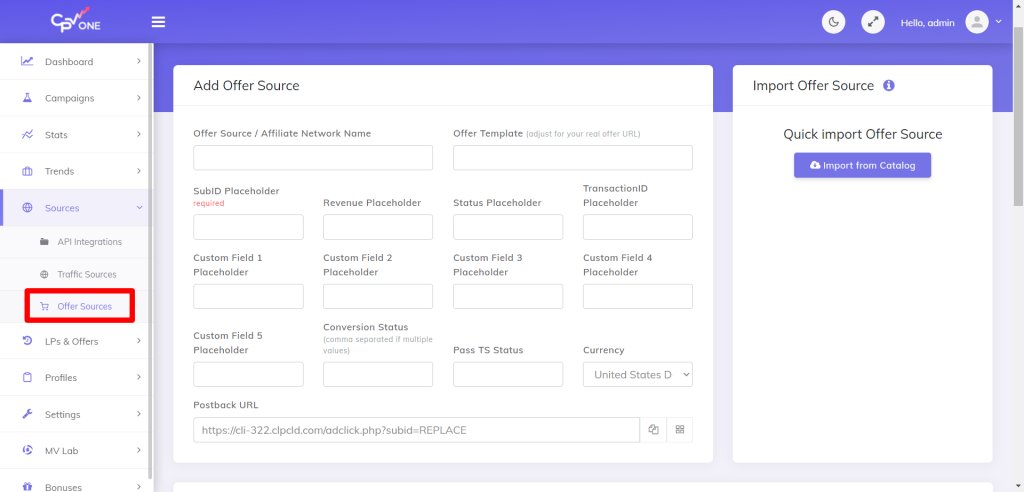
As you can see, you have two options: fill out everything manually or import the Postback URL from the Catalog.
If you want to do it manually, change the REPLACE with the affiliate network macros for subid.
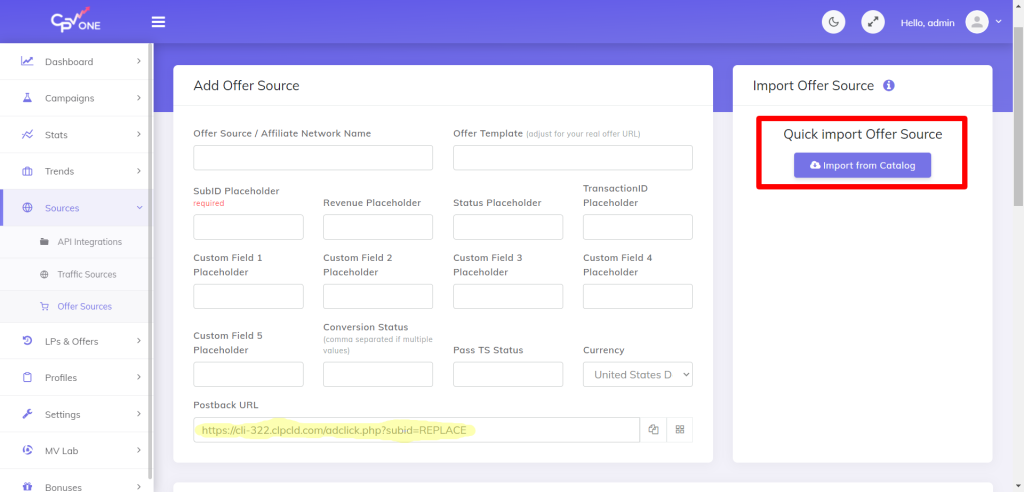
If you click on Import from the catalog, you can choose from all affiliate networks that are connected with CPV Lab or CPV One.
In our case, ClickBank
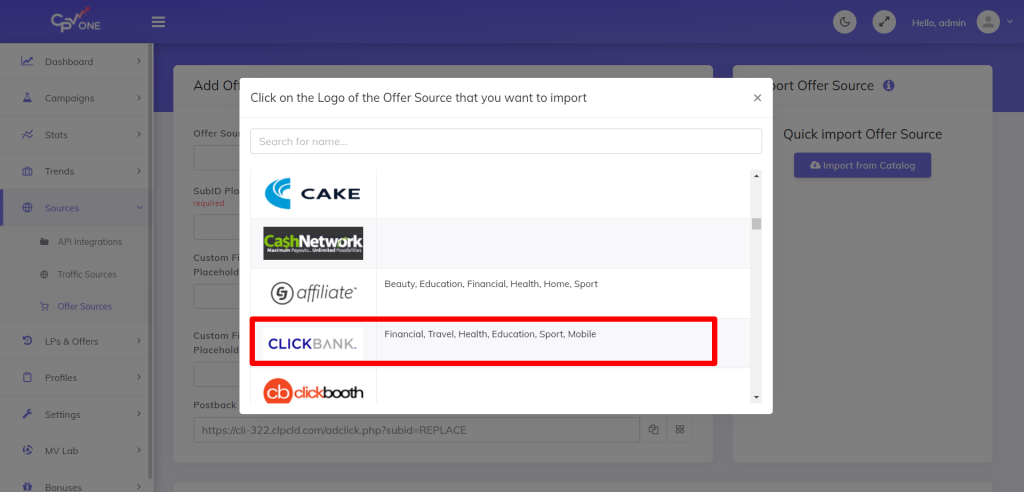
As you can see, all boxes are filled, and you get the postback URL automatically. So you can start tracking your links immediately.
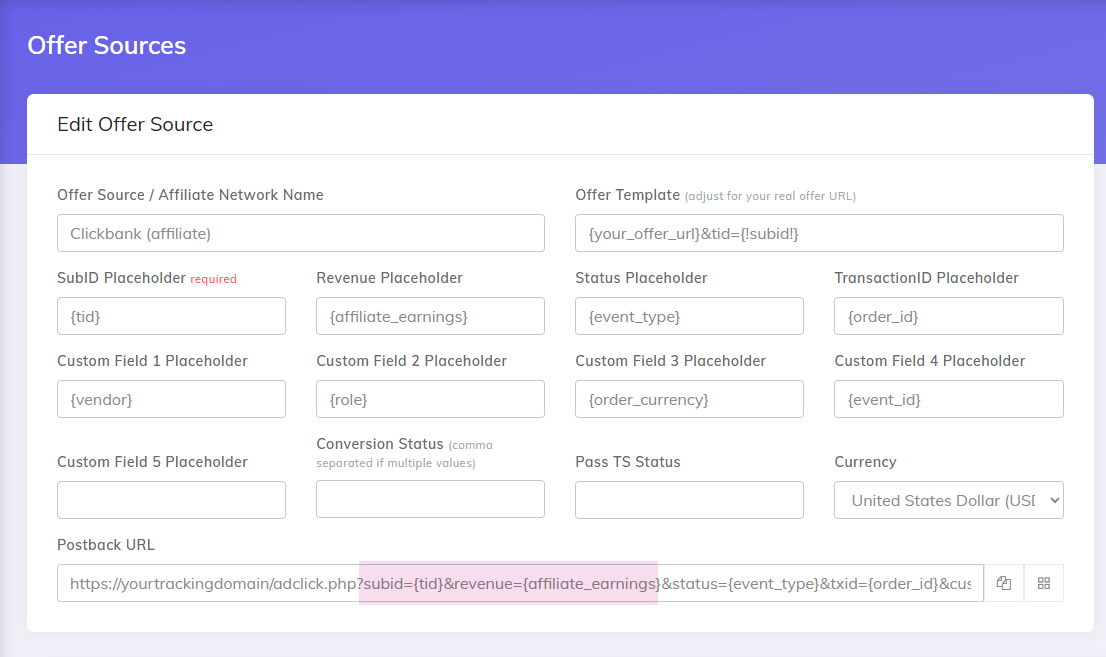
Best Practices
- Verify Regularly: Regularly check that your postbacks are working correctly across all networks.
- in CPV One you can simply check the Postback Log page under the Settings menu.
- Use Robust Tracking Tools: A good tracking platform can simplify the process and ensure you get the most out of your data.
- Tag for Easier Analysis: Use network-specific tags to make it easier to sort and analyze data.
Wrapping Up
Postback URLs might sound technical, but they simply allow you to track conversions more reliably. Instead of depending on users’ browsers or cookies, postbacks use direct communication between servers, ensuring your data is accurate and real-time.
By learning to set them up properly, you can make your affiliate marketing campaigns more efficient and improve your return on investment.
Ready to take control of your tracking? Sign up with CPV One today to start experiencing the difference in postback technology.


